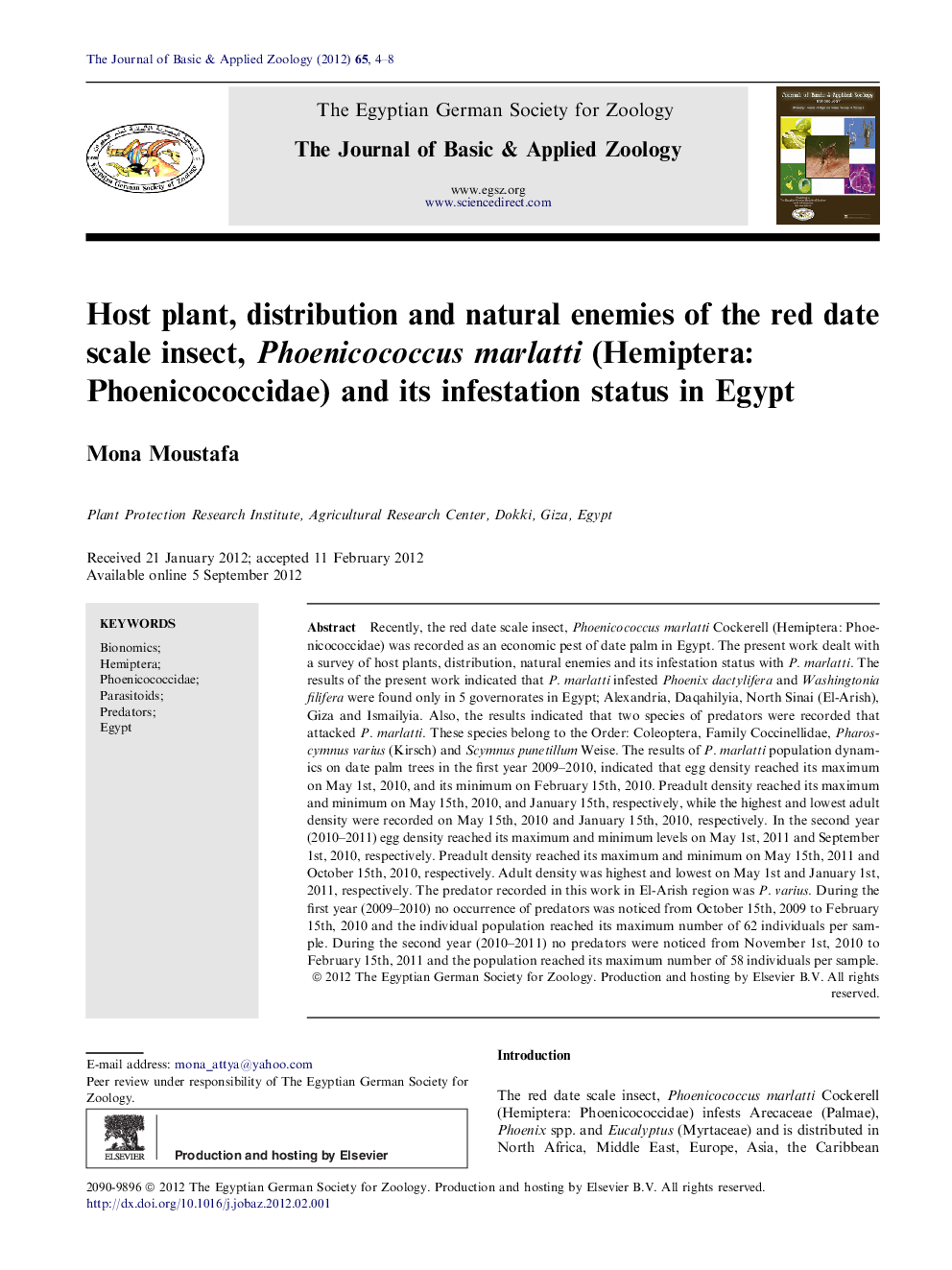| کد مقاله | کد نشریه | سال انتشار | مقاله انگلیسی | نسخه تمام متن |
|---|---|---|---|---|
| 4493524 | 1623679 | 2012 | 5 صفحه PDF | دانلود رایگان |

Recently, the red date scale insect, Phoenicococcus marlatti Cockerell (Hemiptera: Phoenicococcidae) was recorded as an economic pest of date palm in Egypt. The present work dealt with a survey of host plants, distribution, natural enemies and its infestation status with P. marlatti. The results of the present work indicated that P. marlatti infested Phoenix dactylifera and Washingtonia filifera were found only in 5 governorates in Egypt; Alexandria, Daqahilyia, North Sinai (El-Arish), Giza and Ismailyia. Also, the results indicated that two species of predators were recorded that attacked P. marlatti. These species belong to the Order: Coleoptera, Family Coccinellidae, Pharoscymnus varius (Kirsch) and Scymnus punetillum Weise. The results of P. marlatti population dynamics on date palm trees in the first year 2009–2010, indicated that egg density reached its maximum on May 1st, 2010, and its minimum on February 15th, 2010. Preadult density reached its maximum and minimum on May 15th, 2010, and January 15th, respectively, while the highest and lowest adult density were recorded on May 15th, 2010 and January 15th, 2010, respectively. In the second year (2010–2011) egg density reached its maximum and minimum levels on May 1st, 2011 and September 1st, 2010, respectively. Preadult density reached its maximum and minimum on May 15th, 2011 and October 15th, 2010, respectively. Adult density was highest and lowest on May 1st and January 1st, 2011, respectively. The predator recorded in this work in El-Arish region was P. varius. During the first year (2009–2010) no occurrence of predators was noticed from October 15th, 2009 to February 15th, 2010 and the individual population reached its maximum number of 62 individuals per sample. During the second year (2010–2011) no predators were noticed from November 1st, 2010 to February 15th, 2011 and the population reached its maximum number of 58 individuals per sample.
Journal: The Journal of Basic & Applied Zoology - Volume 65, Issue 1, January 2012, Pages 4–8